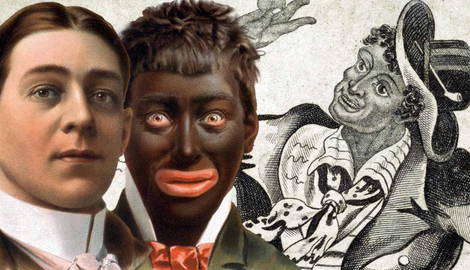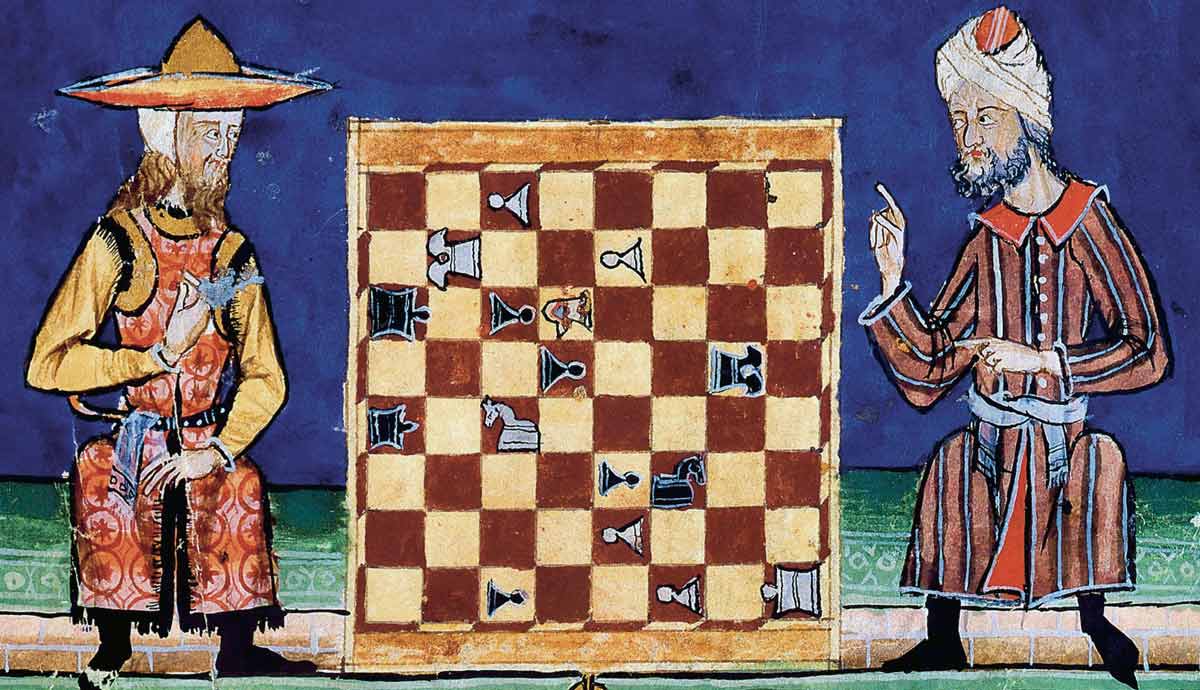
The history of blackface dates back to the American minstrel shows of the 19th century, in which white performers caricatured black characters in a derogatory way, perpetuating harmful racist stereotypes and openly mocking Black culture. Blackface minstrelsy traveled to Britain, was rebooted by Hollywood, and endured to make its mark on 21st-century television. While contemporary society widely condemns blackface as offensive and unacceptable, persistent recent instances of the practice serve as a reminder of the ongoing need for awareness, education — and accountability.
The Social Origins of Blackface

Between the War of 1812 and the onset of the American Civil War (1861-1865), the Antebellum South was deeply stratified along racial, class, and gender lines. The largely rural economy relied upon slave labor and focused on cultivating and exporting cash crops like cotton, tobacco, and sugar.
Cash crops were exported to industrial economies (textile mills) in Europe and New England in the Northern United States. The result was a significant lag in industrial development between the South and the non-slave states of the North. Unlike the North’s burgeoning urban centers, concentrated urbanization in the South was limited to Baltimore (Maryland) and New Orleans (Louisianna) — social inequality was also far deeper.
The planter elite dominated Southern society, controlling the lion’s share of the land and the vast majority of enslaved labor. Their exploitation of slaves fuelled immense profits and deeply entrenched their power and influence as a political class. Below them were Yeoman farmers, who owned and managed smaller-scale farms, without heavy reliance on slaves.
Beneath these groups lay “poor whites” — economically disadvantaged communities that found sustenance as tenant farmers, squatters, sharecroppers, and day laborers. At the lowest rung, were enslaved Africans and African Americans, who were considered property with no legal rights.
The circumstances of poor whites were deeply intertwined with the institution of slavery. They were marginalized from the economy (due to the elimination of free labor in the South) and hindered by a widespread lack of public education. During the Civil War, many poor whites were enlisted as Confederate soldiers.
In the Reconstruction Era and beyond, Southern politicians exploited and perpetuated conflict and division between poor whites and Blacks. With the collapse of the plantation economy, competition over resources combined with resentment over Reconstruction policies fanned the flames of racial tension. White supremacy, enforced through brutal violence, thrived within a climate of hatred and division.
The Birth of Blackface

According to the African American National Museum of Culture, blackface emerged amid the frustrations of the grievances of working class and poor whites in the Antebellum South, who felt “squeezed politically, economically, and socially from the top, but also from the bottom.”
Blackface minstrelsy—exaggerated highly racist comedic performances of “blackness” by white people in black makeup—allowed working-class and poor whites to codify whiteness as “its antithesis.”
Though its precise origins are unclear, the first blackface performers seem to have emerged in the 1830s. The most famous of all was the so-called “Father of Minstrelsy,” Thomas Dartmouth Rice. Rice’s character, “Jim Crow,” deployed buffoonish behavior, erratic dance moves, and exaggerated Black vernacular speech to establish a wildly popular, racially charged genre of entertainment — the blackface minstrel show.
Blackface minstrelsy quickly became a favored form of family entertainment in Northern and Midwest American cities, where white contact with Black people was limited. Over the next century, blackface minstrel shows codified negative Antebellum stereotypes of Black people as criminal, cowardly, lazy, ignorant, and hypersexual — authenticating whiteness as superior and other in the process.
Writing in 1848, the abolitionist and statesman Frederick Douglass described blackface imitators as having “stolen from us a complexion denied to them by nature, in which to make money, and pander to the corrupt tastes of their fellow white citizens.”
Such was the impact and popularity of blackface minstrel shows on white America that the raft of segregationist laws to restrict the political and civil rights of Black people passed by southern legislatures became collectively known as the “Jim Crow” laws.
Thus, as Black people in America were demanding citizenship and the right to vote in the post-Civil War era, their physical appearance, language, intelligence, and character were being openly ridiculed, denigrated, and stereotyped by white society.
Black Face in Britain

Long before the emergence of minstrelsy in the United States, white English men were “blacking up.” Evil in medieval English religious dramas was sometimes portrayed as black, and Shakespearian characters like Aaron the Moor and Othello, who frequently graced the stages of Elizabethan England, were portrayed by white actors in black makeup.
The portrayal of sin and spiritual debasement in medieval times poses its own set of problems. However, it is crucial to distinguish the emergence of blackface in 19th-century Britain as belonging to the development of minstrelsy in the United States.
Blackface performers—including Thomas Dartmouth Rice’s Jim Crow—journeyed to Britain to seek success as early as the 1840s. These performers found a receptive audience in Victorian Britain and swiftly became a cherished element of the British music hall scene. The success of the American acts inspired numerous British imitators. So ingrained was blackface minstrelsy in British popular culture that it remained immensely popular well into the 1950s.

With the advent of television, blackface took on a disturbing new dimension. Following the success of a one-off special, in 1958, the BBC commissioned a prime-time Saturday evening show. At its peak, The Black and White Minstrel Show was watched by over 20 million people. For 45 minutes every week, white men in black makeup performed Jazz, Dixie, and Big Band songs about the Mason-Dixon line and Mississippi. The show ran continuously from its inception in 1958 until it was finally discontinued in 1978.
In Britain, as in America, the popularity of blackface meant that white people engaged with other whites in blackface, over Black people themselves. On the one hand, minstrelsy framed Black people as something to laugh at — as buffoonish, slap-stick entertainment for white people. On the other hand, it reinforced an idea of Blacks as inferior to whites in character and intellect, which worked to normalize their degraded condition and historical enslavement.
Hollywood Blackface

From the silent blockbuster Birth of a Nation (1915), which depicted blackface characters as rioters, criminals, and rapists, to the films of renowned blackface actor Al Jolson in the 1920s, and Judy Garland in Everybody Sing (1938), Hollywood cinema has cashed in on blackface since its earliest days.
Blackface was family entertainment: Mickey Mouse blacked up in Mickey’s Mellerdrammer (1938), Shirley Temple wore blackface in The Littlest Rebel (1935) and danced alongside blackface actors in Dimples (1936). In a now infamous scene from Mary Poppins (1964), Mary the magical nanny, rather than wipe chimney soot off her face, cheerfully powders her nose with it.
More surprising is that the blackface tradition in cinema continues in the 21st century. In O Brother Where Art Thou? (2000), the white main characters darken their faces to disguise themselves in the dark, only to stumble upon a rally of the Ku Klux Klan. Zoolander (2001) features Derek Zoolander (Ben Stiller) parodying Al Jolson’s blackface minstrelsy. More recently, Robert Downey Jr blacked up for his role in Tropic Thunder (2008) — another Ben Stiller Film.
Twenty-first-century television is also rife with examples. A whole host of British comedies from Little Britain and Come Fly With Me, to The League of Gentlemen, and The Mighty Boosh, feature white actors in blackface, as do all three of Australian comedian Chris Lilly’s hit shows (We Can Be Heroes, Summer Heights High, and Angry Boys).
In America, long-running comedy sketch show Saturday Night Live (SNL) has been a repeat offender, from Billy Crystal portraying Sammy Davis Jr in 1984, to Jimmy Fallon wearing blackface to “impersonate” Chris Rock in 2000. In the age of web streaming services, many offending sketches and episodes—and even whole shows—have been removed or scrubbed from the internet altogether.
The Legacy of Blackface

Since the arrival of the first enslaved Africans in the Virginia Colony in 1619, Black people in America have grappled with the dual challenge of “self-conception and self-determination” (West, 1982). Despite the undeniable influence of Black culture on modern society, narratives surrounding Black identity often place it in opposition to the achievements of white civilization.
The tradition of blackface minstrelsy, serving as a set of metaphors and controlling stereotypes, has played a significant and deeply harmful role in perpetuating the notion of Black people as lacking in intelligence, moral characters, and cultural sophistication.
In Spike Lee’s film Bamboozled (2000), a Black TV writer, Pierre Delacroix, becomes embittered by the constant rejection of his scripts by his boorish white boss. In a desperate attempt to get fired—and get free—Delacroix pitches what he considers to be the ultimate outrage: a blackface minstrel show. To his horror, the idea is accepted and the show becomes a hit.
Bamboozled lampoons America’s ease with the racist dehumanization of Black people. A phenomenon evident in twenty-first century film and television, on college campuses, and even within the highest echelons of government. Despite being widely condemned as taboo for several decades, it appears that blackface has never really gone away.
In 2019, Canadian Prime Minister Justin Trudeau said that he could not even remember how many times he has worn blackface, while Virginia Governor Ralph Northam faced scandal after his yearbook photo surfaced depicting a photograph of him and a friend in backface and Ku Klux Klan robes respectively.
The enduring presence of this two-century-long tradition of dehumanizing Black Americans within today’s popular culture serves as a poignant reminder that blackface is not a relic of the past. Instead, it stands as a persistent visible representation of deeply embedded racism and ongoing injustice.










